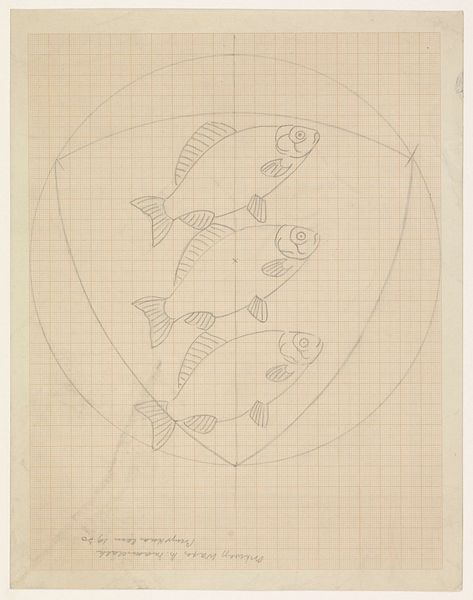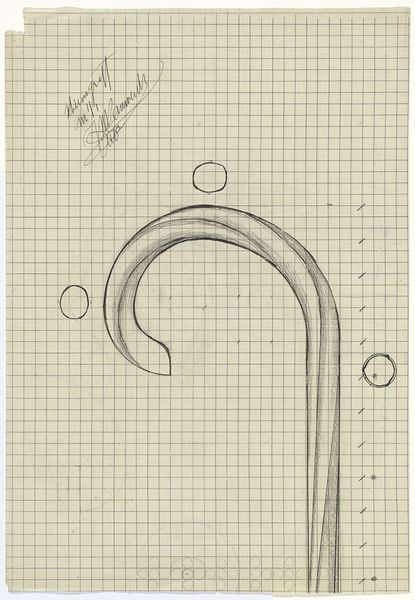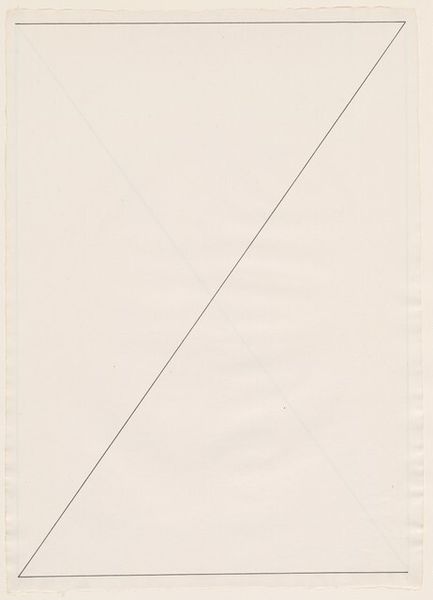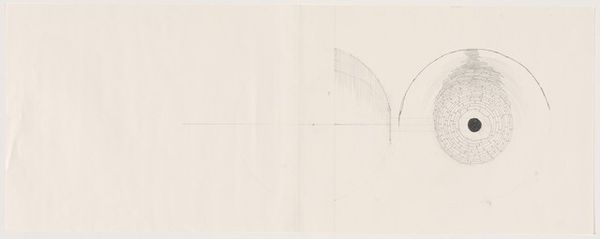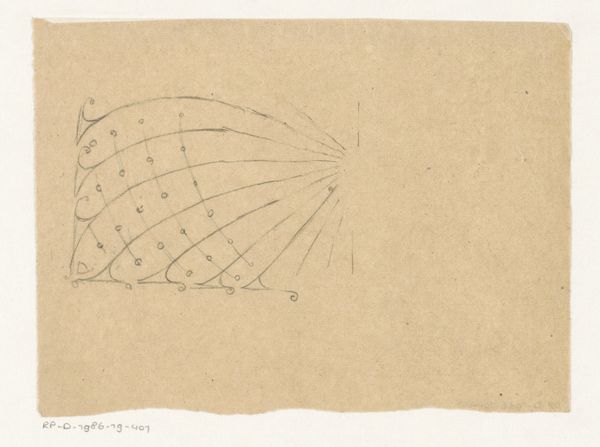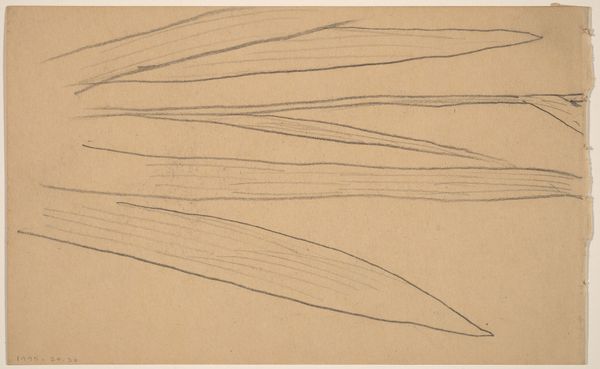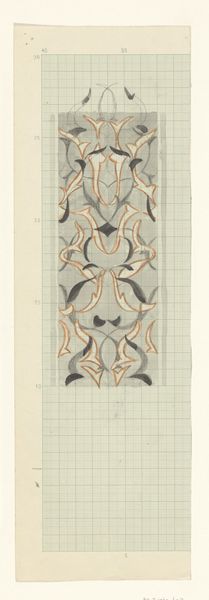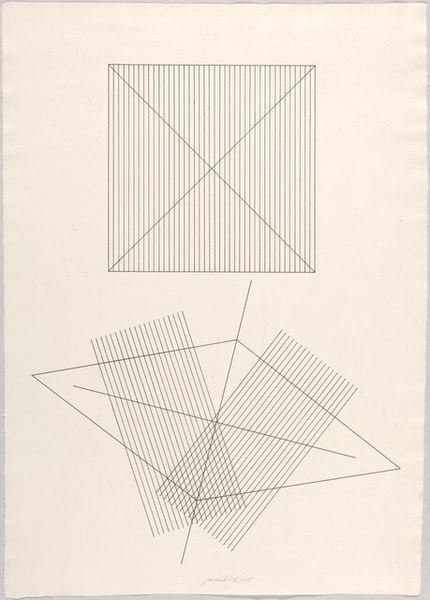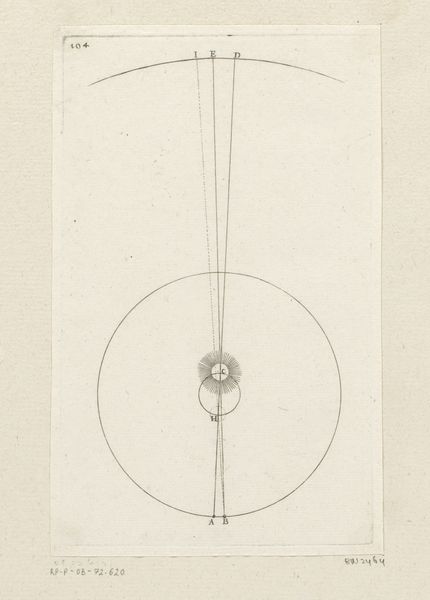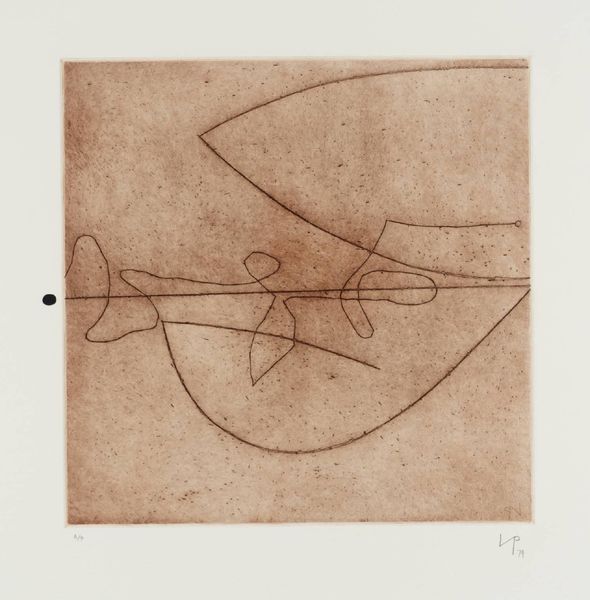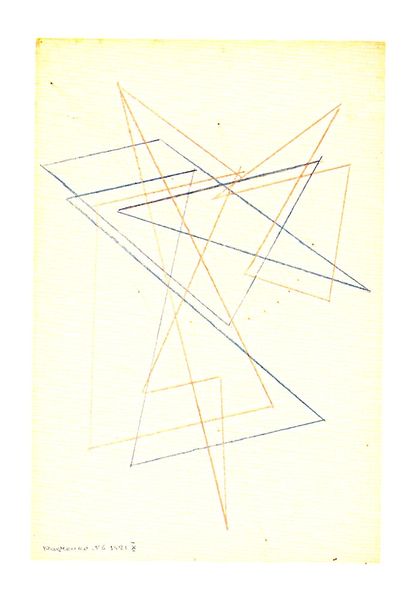
drawing, paper, pencil
#
drawing
#
light pencil work
#
paper
#
geometric
#
pencil
Dimensions: height 150 mm, width 118 mm
Copyright: Rijks Museum: Open Domain
Curator: Looking at this light pencil work on paper, what strikes you first about it? Editor: The bareness of it. It’s so preliminary, like we’re seeing the absolute first seeds of an idea being mapped out. What is it exactly? Curator: This is “Ontwerp voor een halsketting,” or “Design for a Necklace,” by Mathieu Lauweriks, dating from around 1874 to 1932. The piece is intriguing not only for its visual simplicity but because it showcases the geometric underpinnings informing its creation. Editor: It's fascinating to see this laid bare. The grid itself, usually hidden in the design process, becomes so central. Makes you think about the materials involved too – the quality of the paper, the pencil lead... did Lauweriks use particular tools repeatedly, suggesting specific manufacturers were patronized? What implications might that hold in its original time? Curator: Good questions. And its display adds another layer of historical meaning. It wasn't just sketched and made: consider its transformation from workshop design to displayed artifact, where now we contemplate the craft of jewelry design itself, alongside Lauweriks' original intentions. Editor: Definitely. And there's something inherently precious about seeing a functional object in its nascent, most vulnerable form. It invites us to ponder how beauty, status, and capital intersect through the simple form of adornment. It feels so democratic by showcasing design on what appears to be graph paper. Curator: Precisely, because, by displaying the usually hidden preliminary stages, we make visible the material realities involved and perhaps deconstruct the cultural pedestal upon which design and jewelry are often placed. A simple sketch makes us question notions of value and artistic labor. Editor: It's stripped of its power. It prompts a look at what goes into design—the social dynamics of studios, training models, dissemination through workshops... So, although initially simple, it provides profound implications regarding material culture. Curator: I agree completely; I am leaving with the notion that by emphasizing initial construction, it lets us question our assumptions around refinement and worth when it comes to artistic items. Editor: Absolutely. Seeing a design in its earliest stages, you see it not as some fixed monument of taste but as the result of work and a historical and industrial process.
Comments
No comments
Be the first to comment and join the conversation on the ultimate creative platform.
